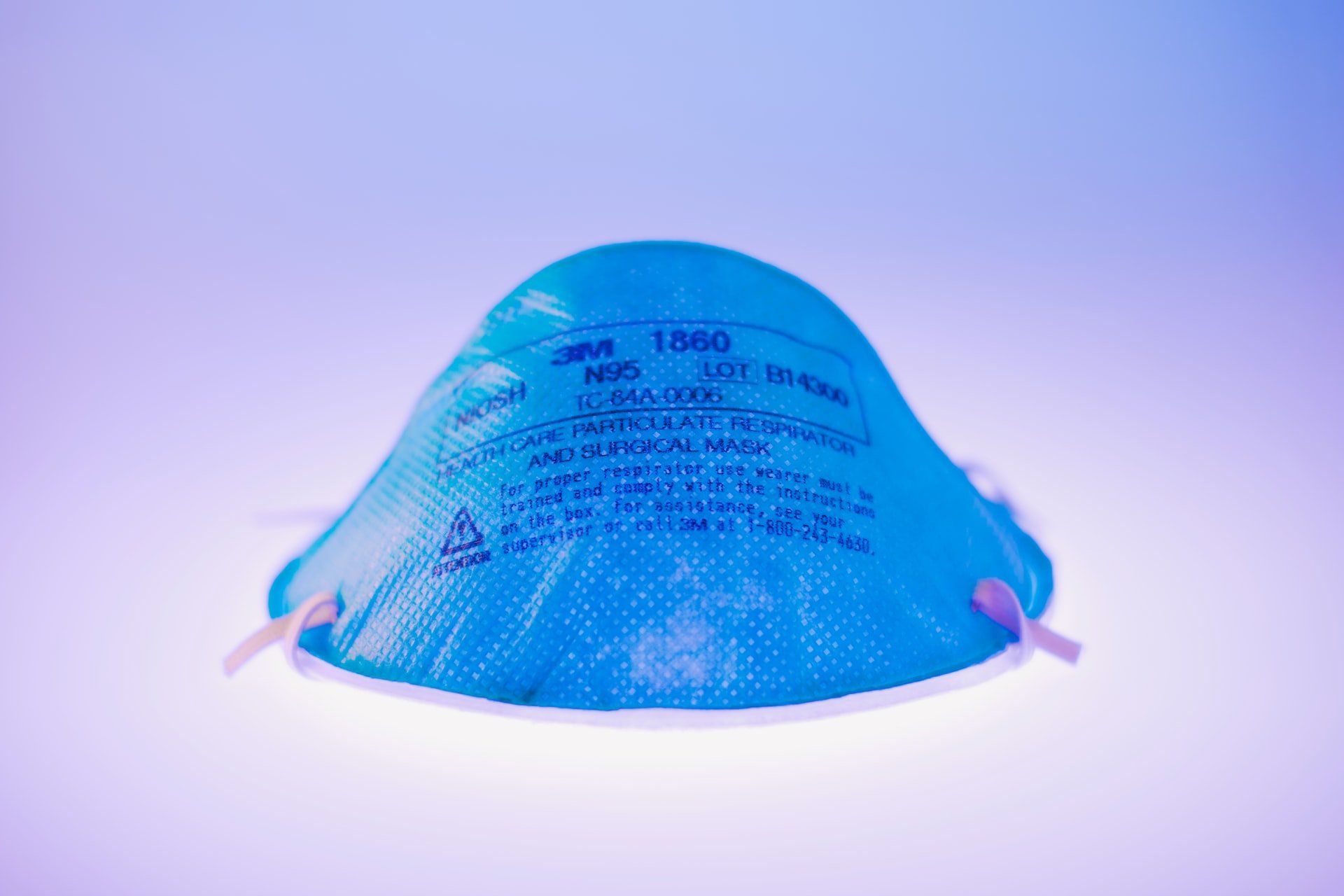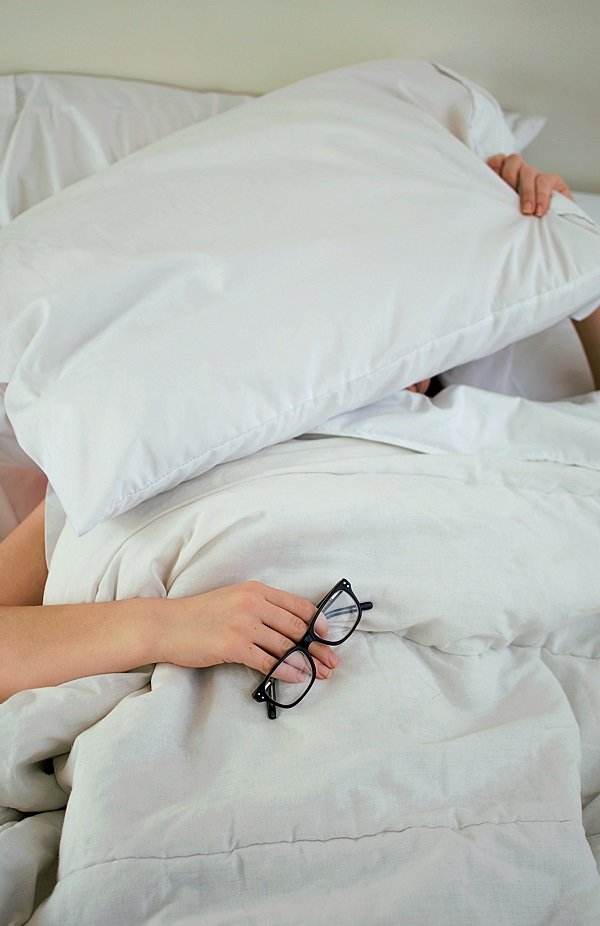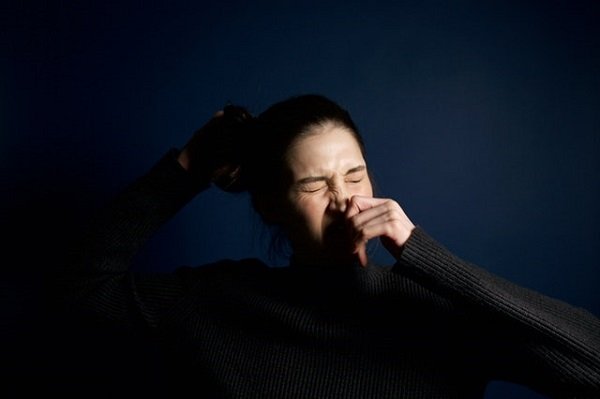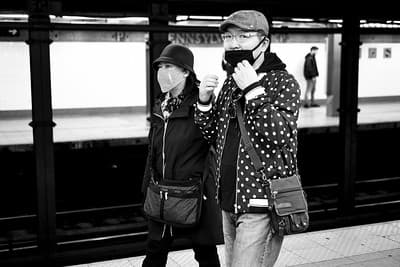Drinks an ungodly amount of coffee and eats an ungodly…

People didn’t always use — or believe — in surgical masks.
A hundred years ago, only surgeons in the operating theater wore surgical masks. They covered their mouths and noses to prevent contaminating wounds and medical equipment. Everything changed when the 1918 influenza pandemic spread across the world and infected about 500 million people. People began to rely on these small scraps of fabric to protect themselves from the deadly disease.
Fast forward to today — as the world battles COVID-19, people wear masks to shield themselves from the disease and, hopefully, flatten the curve. But there’s a lot of misinformation about how to properly wear a surgical mask and how it could keep COVID-19 at bay.
So the question remains: do face masks really protect you or do they offer nothing but a false sense of protection? And do you need to wear one?
Wear a Face Mask if You’re Sick

Just like its original purpose, you should wear a mask to prevent spreading your viral infection to the people around you. So long as you’re infected with a contagious disease (like colds and the flu), you should wear a surgical mask.
This is because when you cough or sneeze, airborne viruses remain suspended in the air and enter the body of an unsuspecting victim, usually through the mouth or nose. A mask catches harmful particles from your mouth or nose, so they won’t be released into the air and harm other people.
This applies to the COVID-19 crisis: if you’re coughing or sneezing, it’s good to wear a mask. Even if you’re not a suspected case. This way, you won’t pass any infection and add to the healthcare system’s workload.
Research has proven the effectiveness of masks for contagious diseases, like the flu. A 2013 study published in the journal PLOS Pathogens revealed that surgical masks can reduce the virus particles in the air around flu patients. Researchers discovered that masks decreased the exhalation of large viral droplets by 25-fold and fine viral droplets by 2.8-fold.
The Centers for Disease Control and Prevention (CDC) encourages the use of surgical masks to prevent the spread of the flu. According to the website, infectious patients must wear a mask every time they leave the isolation room.
Wear a Face Mask if People Around You are Sick

This applies to people in direct contact with infected individuals. Wear a mask if the people around you have a contagious infection. This includes healthcare workers, family members caring for sick relatives, or co-workers and classmates exposed to a sick peer.
The air around an infected person contains tiny, infectious particles that can easily penetrate your body, this is the reason they need to self-quarantine. By wearing a mask, you bar the entrance of potentially harmful airborne viruses to your mouth and nose.
Surgical Masks vs. Non-Airborne Viruses
If put on properly, a surgical mask’s protection extends beyond airborne viruses. If not, and by inhaling infectious particles, you can get the flu by touching a contaminated surface and then touching your mouth or nose.
People touch their faces multiple times a day without realizing it. You touch your face up to 23 times an hour, potentially transmitting virus from a dirty surface to your mouth.
A mask acts as a barrier between your dirty hands and the entrances to your body. So even if you touch things that have come in contact with a sick person, chances of transmission are low.
This applies to the COVID-19 crisis: if you occupy the same spaces as a confirmed, probable, or suspected case, a surgical mask may stop you from transferring the virus from a contaminated surface to your mouth and nose.
Surgical Masks vs. N95 Respirators
Research shows that a surgical mask can guard you just as well as a respirator, which is a more high-tech protective garb.
In a 2009 study published in The Journal of the American Medical Association, researchers observed the extent of protection offered by surgical masks vis-à-vis an N95 respirator. They divided nurses — the study participants — into two groups: one would wear surgical masks, the other N95 respirators.
During the study, only 23.6 percent of surgical mask wearers acquired the infection, whereas 22.9 percent of respirator wearers did. Masks are almost as effective, if not as effective, as N95 respirators.
The CDC also mandates healthcare personnel to wear surgical masks (or a fit-tested respirator) if they come within 6 feet of a suspected influenza patient. The Department of Health (DOH) also strongly recommended wearing medical masks to avoid contacting the avian influenza virus.
What if I’m Neither Sick Nor Have Contact with a Sick Person?

Under ordinary circumstances, healthy people surrounded by equally healthy people don’t need surgical masks. You don’t have any infection to spread, after all. You also don’t have to protect yourself from anything.
Pandemics change the norms, however.
A few days after the country announced its first COVID-19 case, DOH stressed that there’s no need for the public to wear masks. Two months and over two thousand cases later, the government mandated face masks and improvised face covers for people leaving their homes in Luzon — healthy or sick, frontliner or not.
Other pandemics called for similar laws. During the 1918 pandemic, it was illegal to leave homes without a mask in several American and European cities.
How to Wear a Surgical Mask the Right Way
Surgical masks are usually easy to find, but with the COVID-19 pandemic, the country is experiencing a dire shortage.
So we stress the prudent and proper use of medical face masks to make sure it’s effective and that nothing goes to waste.
Masks should only be worn for a maximum of 8 hours, after which they go straight to the trash bin. Ideally, you replace your mask once they get moist. You don’t want infectious particles hanging out around your nose and mouth.
To wear a mask properly:
- Wash your hands – This is a crucial first step. Even though you only held the mask by the earloops, you still have to wash your hands. You’ll be holding a fresh mask, after all. This ensures you don’t pass any contaminant or pathogen to a fresh mask.
- Use the right side of the mask – Regardless if you’re sick or healthy, there’s only one way to use face masks: blue side out, white side in. As cited by the Associated Press, WHO Collaborating Centre for Infectious Disease Epidemiology and Control co-director Dr. Seto Wing Hong says the blue side faces outward because it’s waterproof. It repels other people’s bodily fluids. The white part, on the other hand, touches your face because it is absorbent; if you cough or sneeze, the fabric absorbs the droplets.
- Hold the mask by the earloops – When putting on a mask, hold it by the earloops. You don’t want the bacteria on your hands to transfer to the fabric and stay near your mouth and nose. Tuck the loops behind your ear and make sure your nose and mouth are completely covered.
- Pinch the strip – Pinch the metal strip of the mask, so it takes the shape of your nose bridge. This ensures the area around the nose is sealed off.
- Don’t touch your mask – This is important but overlooked: do not touch the fabric of the mask while you’re wearing it. Once you leave your home, your hands touch a myriad of surfaces; some are possibly contaminated. If you really have to, clean your hands first.
- Dispose the mask – If it has been 8 hours, or if the mask is moist and dirty, hold the mask by the earloops, remove it from your face, and dispose it right away. Never reuse a mask. Then, wash your hands thoroughly.
Reminder: Masks Aren’t Foolproof
Wondering if a mask would protect you from 2019-nCoV? CDC does not currently recommend the general American public use a…
Posted by CDC on Tuesday, February 4, 2020
Even though masks offer a degree of protection, they aren’t foolproof.
For instance, if you touch an infected surface, then touch your eyes, you can still get sick. Moreover, some airborne infections can still get through the fabric.
So it’s not enough to rely on masks to contain contagious diseases. Whether you’re the patient or near one, always wash your hands, clean your personal space, and try not to touch your face. Also, strengthen your immune system by eating healthy and getting vaccinated.
What's Your Reaction?
Drinks an ungodly amount of coffee and eats an ungodly amount of chocolate. Up at an ungodly hour.

